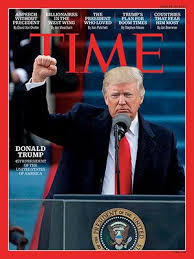


Trump’s Body Language During His Inaugural Address
From our colleague, Carol Kinsey Goman, Ph.D:
On January 20, 2017, Donald J. Trump took the oath of office as the 45th President of the United States. While audiences listened intently to his inaugural address, some of us were more focused on what his body was saying.
I exchanged initial observations with Patrick A. Stewart, Ph.D., Department of Political Science at the University of Arkansas, Fayetteville. Stewart has published research on nonverbal communication by politicians in the journals Presidential Studies Quarterly, Political Psychology, Motivation and Emotion, International Journal of Humor Research, and Politics and the Life Sciences.
It’s always interesting to compare notes with Patrick as he is a scientist and I am a practitioner, a leadership coach, so we approach this topic from different perspectives. Here is the gist of our conversation:
Carol Kinsey Goman: Donald Trumps’ signature nonverbal cues were in evidence during his speech. For example, he relied heavily on his most recognized hand gesture — the air pinch with thumb and forefinger. This gesture signals precision and control. And when he then exploded it into an open-hand, fingers spread gesture and hand chop, it sent an effective signal that he was ready to take that certainty into action.
Trump also uses batonic gestures, such as the up-and-down beat of a hand, to mark out content he deems significant. What did you notice about this during the speech?
Patrick Stewart: The speech itself appeared to be more scripted with Trump’s displays less crisp; however, as the speech continued, his hand and arm movements became more emphatic, with crisp punctuation of his words with batons (hand-and-arm movements that started either mouth level on his dominant right hand side, or slightly lower on this non-dominant left hand side that come down to punctuate his point often mid word and then come back up).
Goman: During the speech, and in pauses between thoughts, Trump’s expression stayed pretty much unchanged. While eliminating his signature jaw juts and smirks was a good choice, Trump missed the chance to non-verbally express positive feelings about his vision of the future. Why didn’t he – ever – smile?
Stewart: Trump engaged in polite smiles (posed with lip corners pulled up, but tight jaw and lips together) on the way to the podium and afterwards, but only when focusing on individuals. But there were no Felt smiles (where the cheeks raise and produce crow’s feet at the corners of the eyes). I viewed this as the norm for Trump – since he has a more “agonic” nonverbal style that focuses less on happiness/reassurance and more on anger/threat displays.
To read the rest, click here.